
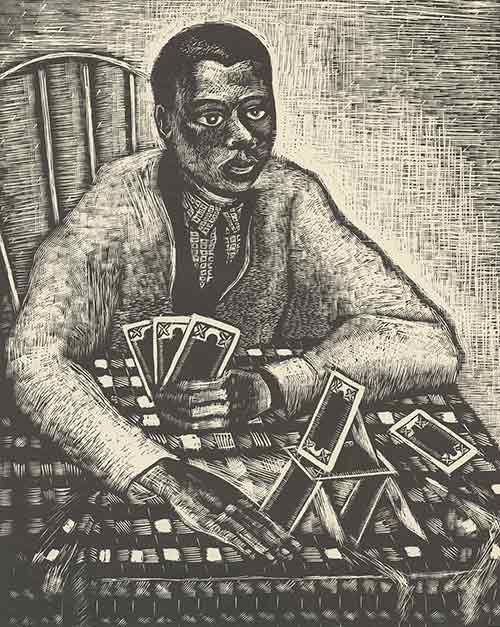
Arverne
312 Beach 54 Street, Arverne
Clarence (1937-1942)
Bernard Schardt
An African-American man building a house of cards on table.1
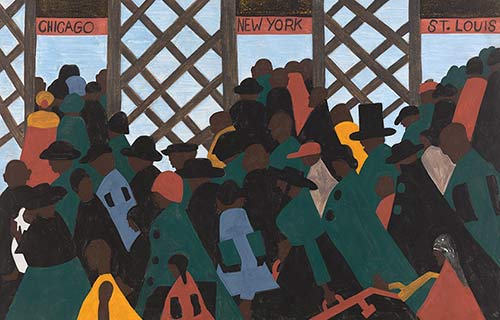
Astoria
14-01 Astoria Boulevard, Astoria
The Migration Series Panel 1 (1940–41)
Jacob Lawrence
This is a panel from Jacob Lawrence's Migration Series. The caption reads, "During World War I there was a Great Migration north by southern African Americans."
Almost 80 years ago, young artist Jacob Lawrence set to work on an ambitious 60-panel series portraying the Great Migration, the flight of more than a million African Americans from the rural South to the industrial North following the outbreak of World War I. Before painting the series, Lawrence researched the subject and wrote captions to accompany each panel. Like the storyboards of a film, he saw the panels as one unit, painting all 60 simultaneously, color by color, to ensure their visual unity. The poetry of Lawrence's epic statement emerges from its staccato-like rhythms and repetitive symbols of movement: the train, the station, ladders, stairs, windows, and the surge of people on the move. Following the example of the West African storyteller, who spins tales of the past that have meaning for the present and the future, Lawrence tells a story that reminds us of our shared history and at the same time invites us to reflect on the universal theme of struggle in the world today.
Source: The Phillips Collection phillipscollection.org 3
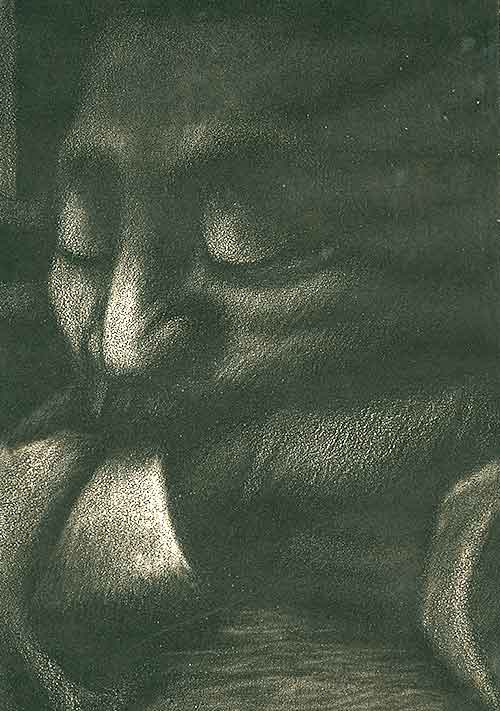
Auburndale
25-55 Francis Lewis Boulevard, Flushing
Head (1937-1942)
Hugh Miller
Portrait of a man resting his head on his hand.1
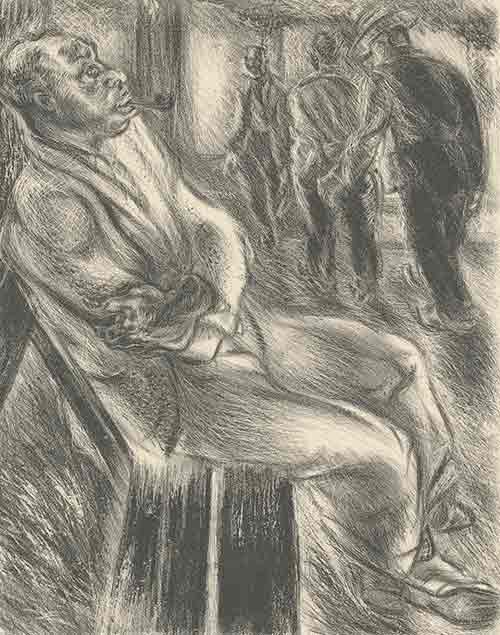
Baisley Park
117-11 Sutphin Boulevard, Jamaica
In the Park (1937-1942)
Nan Lurie
Man smoking a pipe on a park bench.1
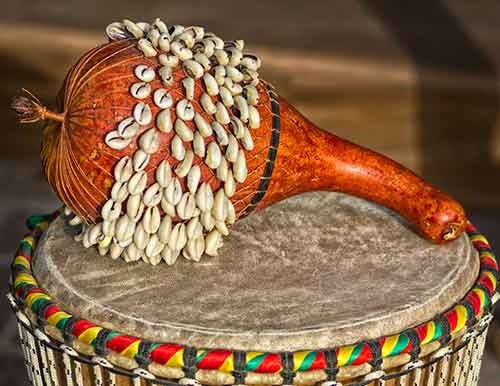
Bay Terrace
18-36 Bell Boulevard, Bayside
Shekere
The shekere was originally an African instrument brought to Cuba during the slave trade. Like the batá drums, the shekere, also called by its African name, agbe, is primarily used for ceremonies of Santería, a religion based on African deities. It is also used as a shaker in nontraditional contexts where a loud, piercing sound is desired. Made from a large gourd or calabash, the shekere is cut open at the top, hollowed out, and dried. A net of beads strung around the gourd produces a sharp, rattling sound as it strikes against the strides. Playing technique involves rhythmically moving the shekere between the hands using a sideways motion. The right hand cradles the bottom of the gourd, while the left holds it around the top or neck. Accents within the pattern are played by striking the bottom of the shekere with the palm of the hand, producing a rich, resonant tone.
Source: The Encyclopedia of Percussion, John H. Beck, Routledge, 2013
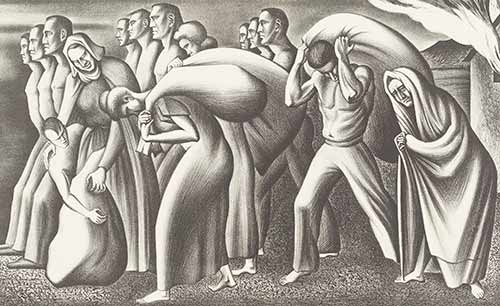
Bayside
214-20 Northern Boulevard, Bayside
Migration (1937-1942)
Abraham Joel Tobias
Families carrying their belongings in large sacks. A building on the far right appears to be on fire.2

Bellerose
250-06 Hillside Avenue, Bellerose
What We Bring: N’goni Musical Bow
Yahaya Kamate
“When I went to teach children in schools, it changed my life.”9
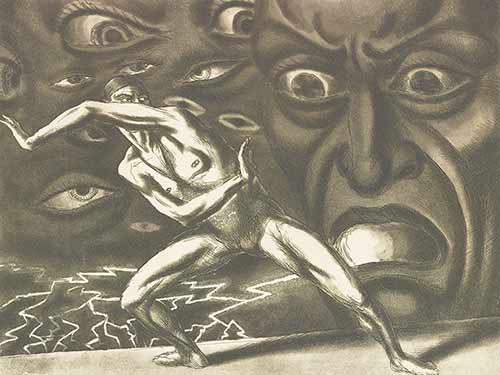
Briarwood
85-12 Main Street, Briarwood
Dance Superstition (1937-1943)
Harry Sternberg
Figure in leotard, dancing in front of a surreal backdrop of eyes and faces.1
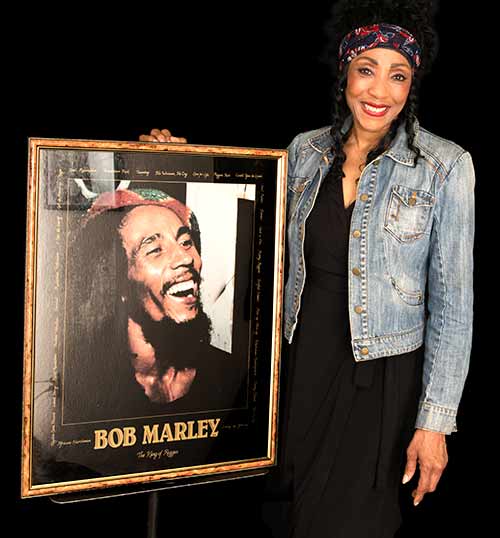
Broad Channel
816-26 Cross Bay Boulevard, Broad Channel
What We Bring: Bob Marley Poster
Cindy Campbell
“It’s like someone waved a wand over the neighborhood.”9
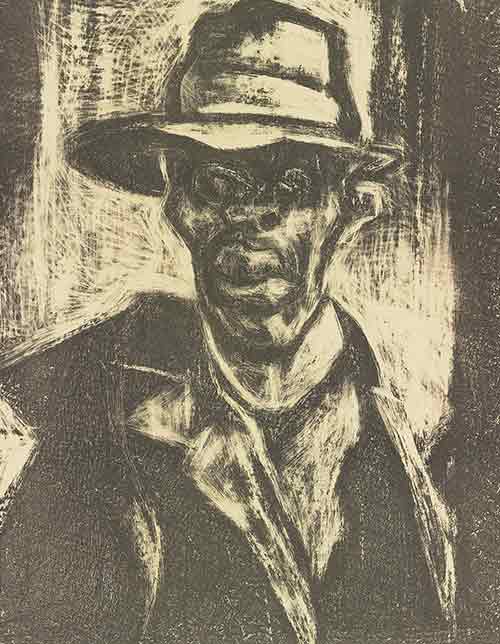
Broadway
40-20 Broadway, Long Island City
Preacher (1935-1943)
Nan Lurie
Portrait of a preacher wearing hat and jacket.2
1 Courtesy of the Fine Arts Collection, U.S. General Services Administration Federal Art Project NYC WPA. On extended loan to Queens Library. Contact digitalarchives@queenslibrary.org for research and reproduction requests.
2 Courtesy of the Fine Arts Collection, U.S. General Services Administration New Deal Art Project. On extended loan to Queens Library. Contact digitalarchives@queenslibrary.org for research and reproduction requests.
3 1940–41, Casein tempera on hardboard, 12 x 18 in. The Phillips Collection, Washington, DC, Acquired 1942. phillipscollection.org.
4 1940–41, Casein tempera on hardboard, 12 x 18 in. The Museum of Modern Art, New York. Gift of Mrs. David M. Levy.
5 Courtesy of the Fine Arts Collection, U.S. General Services Administration New York City WPA Art Project. On extended loan to Queens Library. Contact digitalarchives@queenslibrary.org for research and reproduction requests.
6 Courtesy of the Queens Library, Archives, Storefront Museum Collection.
7 This replica of Augusta Savage’s The Harp is part of the Langston Hughes Community Library’s Black Heritage Reference Center.
8 Harvey Wang, Courtesy of the Queens Library, Archives, Queens Council on the Arts Collection. Copyright: Harvey Wang.
9 Courtesy of City Lore, What We Bring: Immigrant Gifts exhibit, on view at Central Library until March 2. Cosponsored by City Lore, Center for Traditional Music and Dance, the Brooklyn Arts Council, and the CATCH consortium. Curated by Tom Van Buren and Steve Zeitlin. Funded by the Andrew W. Mellon Foundation with additional support from the New York State Council on the Arts and the NYC Department of Cultural Affairs. Photography by Tom Pich.
10 Queens Library, Archives, Queens Borough Public Library Photographs.
11 Courtesy of the Queens Library, Archives, Frederick J. Weber Photographs. Copyright: Estate of Frederick J. Weber.